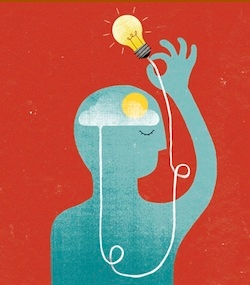
For more than a century we’ve taken the balancing act between supply and demand for granted, and for the most part, it’s worked. To accommodate sudden spikes in demand, engineers overbuilt the grid with excess slack, including wires that were thicker than they needed to be and standby fossil-fuel power plants that could fire up at any instant.
But today our 19th-century grid is being inundated by 21st-century innovations — among them the remote, large-scale solar and wind plants that are leading the state toward its clean-energy future. California has added nearly 2,800 megawatts of renewable energy capacity this year, almost equal to what it gained in the previous 13 years combined, the California Public Utilities Commission reports. In response to the Global Warming Solutions Act, or AB 32, the state has required its three largest utilities to acquire at least 33 percent of their power from renewable sources by 2020, up from the current 21 percent. Some analysts — and utilities — are aiming for well over 40 percent.
These new energy sources fluctuate according to nature’s whims and can’t be switched on at a moment’s notice. The more we rely on solar and wind to replace steady sources like fossil fuels, the less slack remains in the system, and the smaller the margin gets between peak supply and peak demand.
“Renewables integration into the grid poses a fundamentally new problem,” says Sascha von Meier, co-director of electric grid research for the California Institute for Energy and Environment. In various ways, von Meier says, the solar and wind energy that most of us in California are clamoring for — or already installing on our rooftops — is slowly transforming the system through which we deliver and receive power. And we’re not entirely sure what to do about it.
Many of the state’s top energy thinkers — including researchers at UC Berkeley’s Energy and Resources Group (ERG) and College of Natural Resources, and their graduates now employed within the industry — are working to find an answer. In the end, it’s clear that no single approach will do; rather, a blend of public policies, technological innovations, energy-storage solutions, and increased flexibility on the demand side (that means you and me) will work together to help California reach its clean-energy goals and push well beyond them.
—Excerpted from an article in the fall 2012 issue of Breakthroughs Magazine. Read the complete article.